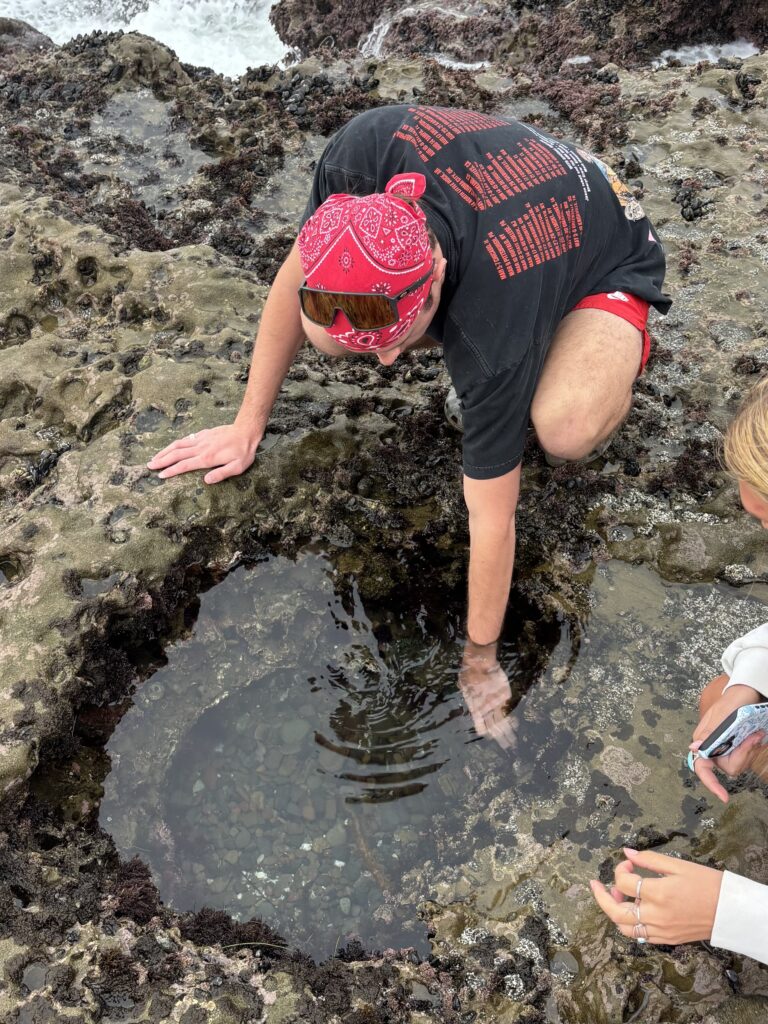Two weeks ago, San Diego experienced tidal ranges much larger than normal, resulting in higher high and lower low tides. According to the Monterey Bay Aquarium, the scientific name for these tides is perigean spring tides, but they are commonly referred to as king tides.
Walter Cho, a professor of biology at Point Loma Nazarene University, said that unusual tides are caused when the Earth, moon and sun line up in what is called a syzygy (a straight line), which makes the moon and the sun pull in the same direction.
According to Fox 5, the San Diego Fox affiliate, the biggest and brightest supermoon of the year, known as the “Beaver Moon,” created an even stronger gravitational pull.
Cho said the tidal ranges are intensified when the moon is closest to the Earth in its orbit, which is known as perigee, and when the Earth is closest to the sun in its orbit, known as perihelion.

The reduced distance between the Earth, moon and sun, along with the strong gravitational forces that are acting in the same direction, results in these intensified tides.
With these low tides, Cho said people will be able to explore farther out into what is called the intertidal zone, which is the area of beach that is covered by water at high tide and exposed at low tide. He said explorers will potentially see animals and places that typically aren’t exposed during a normal low tide, making for better exploration of tide pools.
Gus Heisel, a third-year biology major, is a student in Cho’s BIO 2011: Ecological and Evolutionary Systems class and an avid tide pooler. Heisel said he took advantage of the low tides after hearing about them on TikTok. He went searching in Ocean Beach, along with his brother Andy Heisel, a second-year psychology major, hoping to find organisms and creatures that he studies in class.
“I have always been an outdoorsy person,” Andy said. “Tide pooling gets me outside, and I like seeing all the little critters and the beauty in them.”
Cho said commonly found types of organisms that are found in tide pools around San Diego include crabs, snails, sea stars, barnacles, mussels, and many types of algae and seaweed. He said octopuses, lobsters and some fish are also found.
Some of the creatures Gus and Andy were especially interested in searching for included octopuses and Brittlestars, a species closely related to starfish.
“I knew Dr. Cho liked them [Brittlestars], so I wanted to see if I could find one since I’ve never seen one before,” Gus said.
Cho said he hopes students will be able to apply what they learn in his Ecology class when tide pooling.
“Students in my ecology class will hopefully be able to notice the many different kinds of animals and their many adaptations that allow them to survive and be successful in such a dynamic environment,” Cho said in an email interview.
While Gus and Andy were unable to find either an octopus or the Brittlestars, they identified Owl Limpets, which Gus said he was currently doing a research project on in Cho’s class.
“It was really cool to see populations similar to ones we were studying outside the classroom,” Gus said.
Gus said many of the case studies in the class are in relation to marine life around San Diego, making it easy to see their studies in real life.
Cho said it is important to be cautious when exploring due to the slippery nature of tide pooling and that you should never remove animals from the area.
The California State Park website shares several tips for respectful and safe tide pooling. This includes checking local tide charts, wearing appropriate footwear, being mindful of where to step, not turning over rocks and observing organisms rather than touching or grabbing them.
Gus and Andy will return to their explorations when the king tide returns next month. They also encouraged others to try it.
“I enjoy how each tidepool is different and you never know what you’re going to see because they’re always changing,” said Andy Heisel.
“No two tidepools are the same,” Gus said. “It’s amazing to see the complexity and beauty of God’s creation in each and every one.”
